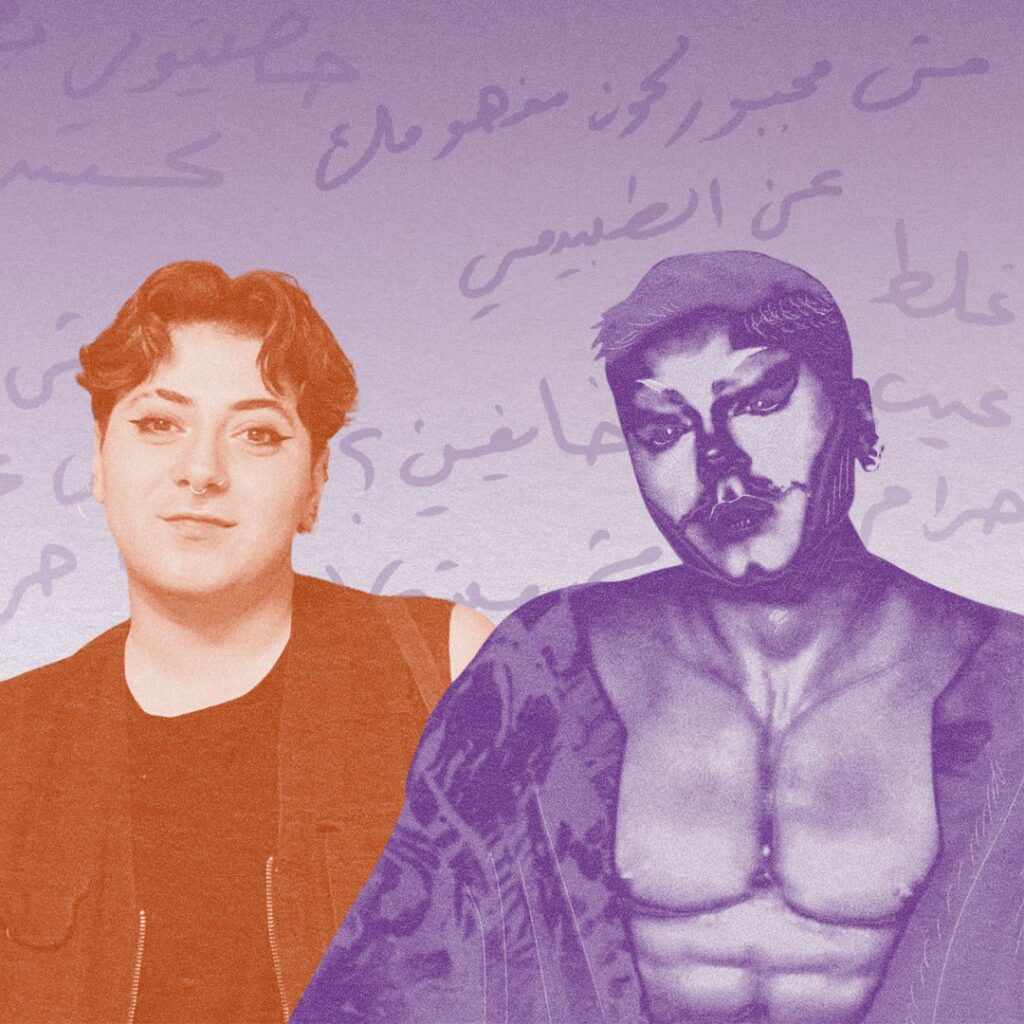Drag art is not merely about the clothes we wear or the makeup we apply; it is, first and foremost, a revolution within ourselves, and then against the deeply rooted stereotypes that shape us. It serves as a space for expressing identity, with no fixed rules. Despite its many forms, this diversity is more of an intersection than a categorization.
Beyond its intrinsic value in challenging and reconciling with our inner selves, drag art utilizes its performances to address and engage with societal issues but in its own unique way. The exaggeration in its expression and its insistence on opening up taboo topics that society often forbids discussing publicly, especially those related to gender and gender diversity, serve a clear purpose: to raise questions boldly and directly, sometimes even sharply. And perhaps, this is what truly sets drag apart from other forms of art.
The Origins and Forms of Modern Drag:
One of the stories told about the origins of drag art, specifically what is known today as drag queens is that during the 16th and 17th centuries, women were prohibited from acting. As a result, men took on female roles in theatrical performances by wearing long dresses, which they would often drag behind them hence the term “drag.” Drag became a means for some gay men to express other facets of their identities.
On the other hand, drag kings — a form of drag centered around embodying masculinity began to emerge in societies where women were not allowed to study or work. This pushed some women to take on male roles. By the year 1800, this concept had made its way into theater.
Drag artists express themselves through various forms or styles, each of which may reflect the artist’s gender identity. Often — though not exclusively — drag queen performances are done by men, and similarly, drag king roles are often — but not solely — performed by women.
There is also drag queering or drag queer, a style that expresses a third gender identity that is not strictly male or female. It can be seen as a blend of both, or as entirely separate from them.
Once again, this diversity is not about creating rigid categories, but rather a clear expression of the fluid intersections between gender identities.
Drag Kings and Drag Queens in Drama and Animation:
Drag kings and drag queens can clearly be found in Arab drama, with several examples of characters embodying the concept of drag either by cross-dressing for dramatic purposes or as a form of comedy, depending on the creator’s perspective.
One notable example is the Syrian TV series Four Seasons (Al-Fusoul Al-Arba‘a), directed by the late Hatem Ali, which still enjoys a wide Arab viewership. The show featured a brilliant portrayal of drag king performance in an episode titled “Ya Wad Ya Te’eel”. In it, a group of young women disguised themselves as a gang of men in order to carry out a plan to kidnap the episode’s main character, Mazen.
In Gulf drama, actor Nasser Al Qasabi also portrayed a drag character in the hit series Tash Ma Tash. He played a comedic and exaggerated female role named Suzan Al-A‘mash, presenting a humorous take on gender performance.
Similar ideas have also been presented in Egyptian cinema. One example is the film “I Want a Solution” (Oreedu Hallan), which tells the story of a woman, portrayed by Faten Hamama, who is forced to disguise herself as a man in order to enter court and follow up on her divorce case — a clear commentary on the legal restrictions women faced in Egypt at the time.
Another example is the film “For Men Only” (Lil-Rijal Faqat), in which actresses Soad Hosny and Nadia Lutfi play two women who disguise themselves as men in order to work in the oil engineering field — a profession that was then exclusively male.
In the world of animation, similar characters have appeared in popular platforms like Disney and Spacetoon. One of the most prominent examples is the movie Mulan, in which the heroine disguises herself as a man to join the army. Another is the anime series The Fountain of Dreams (Yanbou’ Al-Ahlam), where the protagonist “Noor” transforms into a woman, opening up an additional layer of identity-related challenges.
Drag as a Deconstruction of Gender Norms:
Talking about drag or the art of drag is entirely different from traditional cinematic or theatrical arts. A drag artist lives their experience on stage as an extension of their identity, capable of deconstructing concepts like gender and identity in a free and completely independent way.
On a personal level! Drag has gradually helped me better understand myself as a non-binary person, and to dismantle the gender constraints that society imposed, some of which still linger within me.
Through drag, I can become the person I want to be. I get to reveal sides of myself I hadn’t accepted, in order to reconcile with them. The impact extends to the audience; their eyes sparkle with inspiration. When I’m on stage, I envision a visible bridge that transfers the confidence and strength I embody to the audience. It carries a message about the importance of being honest with oneself and embracing that truth.
In recent years, through social media, I’ve come to realize that interest in drag art is growing within Syrian society. Perhaps now is the right time to shine a brighter light on the world of drag and its significance as a powerful tool for expression and change in our communities.
Wafi – Syrian Kurdish visual artist, drag performer, and queer activist

